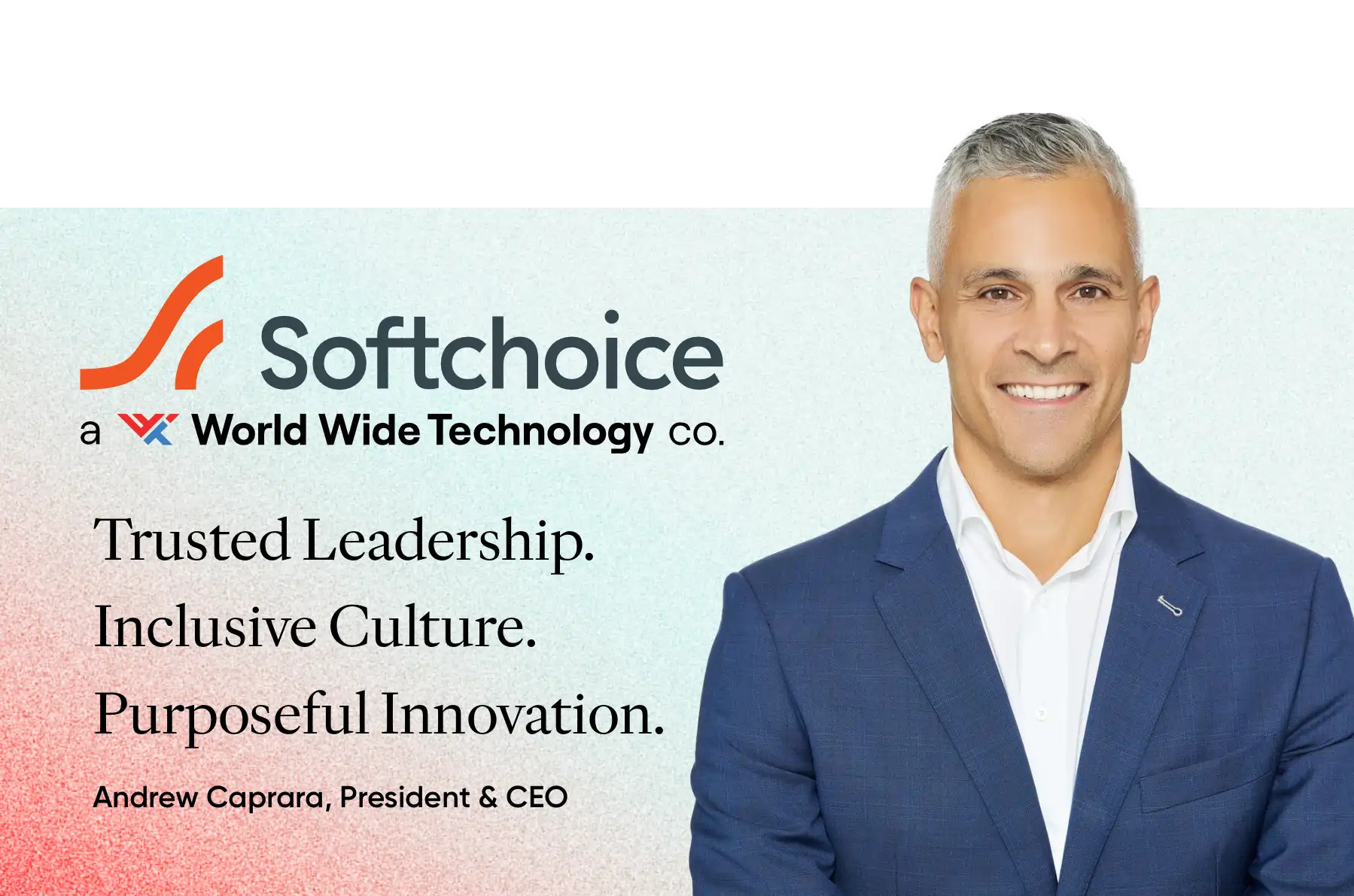
Key Takeaways:
- Leadership Drives Fairness: 83.6% of employees at Certified™ workplaces say managers avoid playing favorites, compared to just 45.6% in typical Canadian workplaces—highlighting the impact of consistent leadership behaviours on trust.
- Engagement Starts with Leadership: 88.2% of employees in top workplaces look forward to coming to work, versus 51.7% in typical organizations, showing how leadership influences daily employee sentiment.
- Equity Matters to Retention: 70.5% of Certified™ employees feel they receive a fair share of company profits, compared to only 34.9% in other workplaces—a reminder that transparency and fairness affect loyalty.
- High-Trust Culture is a Business Advantage: Organizations with high-trust cultures see stronger financial results and faster recovery during downturns. Learn more in "The Business Case for High-Trust Workplaces" report.
- Development Expectations Are Rising: Today’s workforce expects opportunities to grow. Lack of leadership development is now a top reason employees leave their jobs (2023 Retention Report
In today’s workplaces, leadership is no longer defined solely by title or tenure. The real influence of a leader lies in how they engage people, respond to change, and build trust across all levels of the organization. Leadership development, therefore, is not just a support function—it is a strategic priority. Done well, it contributes to stronger employee experiences, better decision-making, and sustainable business results.
Leadership sets the tone for culture
Every organization has a culture. The question is whether it’s intentional or left to evolve on its own. Leadership plays a central role in shaping that culture. How leaders communicate, recognize effort, resolve conflict, and make decisions sends a strong signal about what the organization values.
When leaders consistently demonstrate credibility, respect, and fairness, people tend to respond with higher levels of engagement and commitment. These qualities are often the foundation of trust, which research shows is the single most reliable indicator of a healthy and high-performing workplace. As noted in the article 5 Proven Ways Inclusive Leadership Builds Strong Workplace Cultures, inclusive leaders who prioritize equity and psychological safety are central to building consistent and fair employee experiences.
Leadership effectiveness can be measured—and improved
The concept of a “natural-born leader” can limit growth. Most effective leaders are made, not born. That’s why organizations that prioritize leadership development are more likely to adapt in times of change and retain top talent.
Effective development starts with measurement. By collecting direct feedback from employees, companies can get an honest view of how leadership is experienced—not just how it’s intended. Employee feedback tools can help assess consistency, fairness, and communication quality across departments, roles, and demographics.
Once this feedback is understood, development strategies can be tailored to address real gaps—whether that’s in communication style, recognition practices, or decision-making transparency.
Trust is built one interaction at a time

In workplaces where trust is high, people are more willing to share ideas, take calculated risks, and work collaboratively. But trust doesn’t just appear—it’s built over time, through consistent behaviour.
When managers take the time to understand their teams, when they make fair decisions and follow through on commitments, they create a more dependable and inclusive environment. These everyday actions carry more weight than formal policies.
Conversely, inconsistent leadership—where communication is uneven or recognition is limited—often results in disengagement, higher turnover, and difficulty attracting new talent.
In fact, a growing body of evidence shows that trust is not just good for morale—it has clear financial implications. Companies with high-trust cultures report better employee retention, stronger financial performance, and more resilience during market disruptions. These findings are outlined in the High-Trust Culture Business Case study, which details how trust-based workplaces outperform their peers across critical metrics such as stock market returns, voluntary turnover, and innovation speed.
A strong leadership pipeline supports long-term success
As businesses grow or undergo transitions, having a steady pipeline of leaders who are prepared to take on new responsibilities becomes essential. Without this pipeline, organizations are more vulnerable to disruption, internal friction, and succession risks.
Leadership development programs should be proactive, not reactive. This means creating opportunities for emerging leaders to gain experience, receive coaching, and contribute to cross-functional projects. When people are developed early and consistently, they’re more likely to feel invested in the organization’s mission and better equipped to handle complexity.
Great leaders influence retention and recruitment

People don’t leave companies—they often leave managers. Leadership behaviours significantly influence whether employees feel seen, heard, and valued in their roles. In environments where people trust their managers and believe their input matters, they’re more likely to stay.
On the recruitment side, job candidates often research leadership reviews and employee testimonials. If a company has a reputation for strong, people-focused leadership, it’s more likely to attract skilled candidates who are looking for more than just a paycheck.
According to the 2023 Retention Report by Work Institute, today's workforce expects development as a standard part of the employee experience. When organizations don’t provide meaningful opportunities to grow, they risk losing talent to employers who do.
Replacing just one employee can cost approximately $4,700, not including lost productivity, training costs, or the time it takes to ramp up a replacement (Great Place to Work Canada, 2025). This makes the case for strong, consistent leadership development even more urgent—not just for engagement and culture, but for controlling business costs.
Survey data further highlights the performance gap between average workplaces and Certified™ great workplaces. For example, in top Certified organizations, 83.6% of employees say managers avoid playing favorites, compared to just 45.6% in typical Canadian workplaces. That kind of consistency in leadership behaviour isn’t accidental—it’s the result of deliberate development efforts. Similarly, 88.2% of employees in Certified workplaces report they look forward to coming to work, compared to just 51.7% in typical organizations. This speaks directly to the emotional impact of effective, people-first leadership (Great Place To Work® 2021 Global Employee Engagement Study).
And while financial equity isn’t always top of mind when discussing culture, it plays a pivotal role in trust and retention. In top Certified workplaces, 70.5% of employees say they receive a fair share of company profits,In top Certified workplaces, 70.5% of employees say they receive a fair share of company profits, compared to 34.9% in non-Certified workplaces. Leaders who communicate clearly about compensation and share in success tend to foster stronger long-term loyalty.
Leadership development is not one-size-fits-all
A common mistake is approaching leadership development as a single training session or a generic checklist. Effective programs take context into account—industry norms, workforce demographics, and organizational goals all matter.
Leadership needs also evolve. What works for a small start-up may not apply to a growing national brand. That’s why development efforts should include space for customization, feedback loops, and progress tracking over time.
In addition, organizations benefit from viewing leadership development as part of a broader strategy to strengthen workplace culture, rather than a standalone initiative.
Developing leaders who lead “For All”

Some organizations develop leaders who excel only within specific groups or hierarchies. But in workplaces that aim to be inclusive and fair, leadership must be consistent across roles, departments, and identities. This is what we call a “For All™” leader - someone whose impact extends beyond direct reports, helping everyone feel part of the bigger picture.
Developing these types of leaders requires an intentional effort to identify barriers, listen to diverse voices, and hold managers accountable for equitable practices. The payoff is not just a more inclusive culture, but a more resilient one.
A practical starting point
Leadership development doesn’t require a complete overhaul to begin. Organizations can start by identifying one or two key areas—for example, how well managers recognize effort, or how consistently feedback is delivered—and build from there.
Pairing regular employee input with leadership coaching or peer-based learning sessions can create momentum. Over time, these practices can shift the leadership culture in ways that are noticeable and meaningful.
Tools & Resources
- Trust Index™ Employee Feedback Survey: Gain actionable insights on how your employees perceive leadership, fairness, and communication. This survey is foundational for measuring and improving workplace trust.
- Leadership Development: Use data-informed leadership programs to build trust-based behaviors like credibility, respect, and fairness—critical elements that drive culture and performance.
- Great Place to Work® Certification: Start with a validated two-step process that includes employee feedback and culture assessment. Certification can support your recruitment, retention, and leadership credibility.
- Culture Consulting: Get expert support to assess leadership impact, align executive behaviors with company values, and strengthen your workplace culture as a long-term strategic asset.
Feedback
We value your feedback! Your insights are crucial to helping us create meaningful content. Did the strategies in this article inspire new ways to strengthen leadership in your organization? Are there specific challenges you'd like us to address? Share your suggestions or ideas with us.. Together, we can develop resources that truly make a difference. Have feedback? Fill out this form by clicking here.
Get Certified
Want to know how your people feel about your leadership practices? Get Certified today and learn the answer to this question and gain many more insights along the way.
Frequently Asked Questions:
What is the first step to improving leadership in my organization?
Start by listening your people, gather employee feedback to understand current perceptions and identify focus areas for leadership development.
How do I know if our managers are building trust effectively?
Trust can be measured. Use employee feedback tools that assess fairness, respect, and credibility—core components of trust in leadership.
Is leadership development only for executives?
No. Leadership development should include people managers at all levels to ensure consistency in employee experience and prepare future leaders across your organization.
How do I get my company Great Place to Work Certified?
Certification involves only two-steps: surveying your employees and completing a brief culture questionnaire. Learn more on our Certification page.






